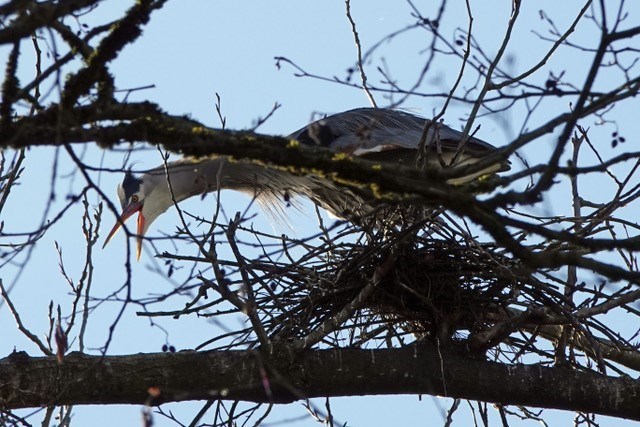The Editor:
Once again, our local government is choosing “development” at the expense of “biodiversity!”
This time, Burnaby is targeting the heronry located in the black cottonwoods of Deer Lake Park — just south of City Hall’s West Building.
Burnaby’s Pacific Great Blue Heron colony began in about 2005 when four nests were identified at Deer Lake. In 2022, a biologist counted 68 nests and, in 2023, an additional nest was counted. Nowadays, the herons are laying, on average, one egg per nest per season instead of nearly five. Biologists are unsure why the egg count here is declining.
Great Blue Herons were first listed as a “species of special concern” in 2010 under the federal Species at Risk Act and they are on the B.C. government’s “Blue List.”
The province sets out “best management practices” that aim to protect wildlife in the face of development pressures. They are contained in the “Develop with Care 2014: Environmental Guidelines for Urban and Rural Land Development in British Columbia” and the “Great Blue Herons Fact Sheet.”
Local governments are urged to “design and locate developments to avoid disturbing heronries and feeding areas. Talk to the local government about ways to concentrate development in areas with lower environmental values…..”
Not heeding this important advice, the city intends to locate two childcare facilities (stated to be primarily for the benefit of city and RCMP staff) with playgrounds and child “drop off” areas within the herons' protective buffer zones on land that was previously earmarked for inclusion in Deer Lake Park. The childcare facilities are for infant/toddlers and for children ages 3-5 for whom other equally suitable sites might have been chosen.
The Fact Sheet requires local governments to identify and mark out a 60 m. buffer area around the heronry "where there will be no activities (not even recreational trails). Naturally vegetated buffers help to shield the nests and young from human disturbance and predation by Bald Eagles, crows, and ravens.”
It also states, "An additional 200 metre ‘no disturbance’ buffer is recommended during the nesting season, especially for colonies not previously accustomed to people and their activities” (the province defines “nesting season” as Jan. 15-Sept. 15 to include the times when the chicks are being hatched and before they are old enough to fly and forage on their own).
It has recently been confirmed in a report from the city’s childcare project’s environmental consultants that the proposed childcare site lies 30 per cent within the 60 m. "no activities" buffer zone and 100 per cent within the "no disturbance" buffer zone.
The City of Burnaby is prepared to construct buildings, driveways and playgrounds in an area where the Fact Sheet says not even recreational trails should be allowed. And civic workers were seen excavating the site in April 2024 — during nesting season!
The Pacific Great Blue Herons moved into a corner of Deer Lake Park that has no vegetative buffer to the west or north (especially, since the city created its new solar parking lot).
Now, the city is taking away an important vegetative buffer to the east of the heronry. The city has taken down at least 17 very large western red cedars as well as bushes and understory that had been providing the herons with protection from eagles, as well as foraging ground.
North America has lost almost 3 billion birds since 1970. The leading cause of declining bird populations is habitat loss and degradation.
“Save Burnaby’s Parks and Green Spaces” has started a petition that calls upon Burnaby’s mayor and council to stop construction and other site activities until the end of nesting and breeding season and to relocate the childcare centres to “an area with lower environmental values.”
Burnaby celebrates the Pacific Great Blue Herons at local events and has etched the herons' image on many bus shelters around the city. Yet, it is failing to protect this iconic bird and symbol of wetland conservation and environmental quality.
Burnaby could find a less environmentally sensitive location for the childcare centres. It could hold itself to the same standards it requires of other developers.
But will it?
- Christine Cunningham, Burnaby



